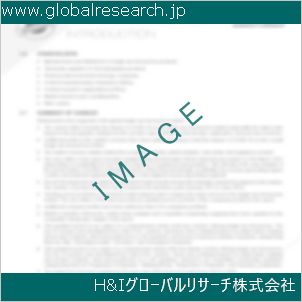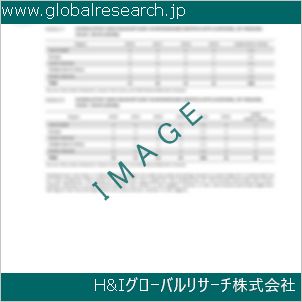Table of Contents
1 Industry Overview of Aniline
1.1 Definition and Specifications of Aniline
1.1.1 Definition of Aniline
1.1.2 Specifications of Aniline
1.2 Classification of Aniline
1.3 Applications of Aniline
1.3.1 Nuclear Application
1.3.2 Non-Nuclear Application
1.4 Industry Chain Structure of Aniline
1.5 Industry Overview and Major Regions Status of Aniline
1.5.1 Industry Overview of Aniline
1.5.2 Global Major Regions Status of Aniline
1.6 Industry Policy Analysis of Aniline
1.7 Industry News Analysis of Aniline
2 Manufacturing Cost Structure Analysis of Aniline
2.1 Raw Material Suppliers and Price Analysis of Aniline
2.2 Equipment Suppliers and Price Analysis of Aniline
2.3 Labor Cost Analysis of Aniline
2.4 Other Costs Analysis of Aniline
2.5 Manufacturing Cost Structure Analysis of Aniline
2.6 Manufacturing Process Analysis of Aniline
3 Technical Data and Manufacturing Plants Analysis of Aniline
3.1 Capacity and Commercial Production Date of Global Aniline Major Manufacturers in 2023
3.2 Manufacturing Plants Distribution of Global Aniline Major Manufacturers in 2023
3.3 R&D Status and Technology Source of Global Aniline Major Manufacturers in 2023
3.4 Raw Materials Sources Analysis of Global Aniline Major Manufacturers in 2023
4 Capacity, Production and Revenue Analysis of Aniline by Regions, Types and Manufacturers
4.1 Global Capacity, Production and Revenue of Aniline by Regions 2019-2024
4.2 Global and Major Regions Capacity, Production, Revenue and Growth Rate of Aniline 2019-2024
4.3 Global Capacity, Production and Revenue of Aniline by Types 2019-2024
4.4 Global Capacity, Production and Revenue of Aniline by Manufacturers 2019-2024
5 Price, Cost, Gross and Gross Margin Analysis of Aniline by Regions, Types and Manufacturers
5.1 Price, Cost, Gross and Gross Margin Analysis of Aniline by Regions 2019-2024
5.2 Price, Cost, Gross and Gross Margin Analysis of Aniline by Types 2019-2024
5.3 Price, Cost, Gross and Gross Margin Analysis of Aniline by Manufacturers 2019-2024
6 Consumption Volume, Consumption Value and Sale Price Analysis of Aniline by Regions, Types and Applications
6.1 Global Consumption Volume and Consumption Value of Aniline by Regions 2019-2024
6.2 Global and Major Regions Consumption Volume, Consumption Value and Growth Rate of Aniline 2019-2024
6.3 Global Consumption Volume and Consumption Value of Aniline by Types 2019-2024
6.4 Global Consumption Volume and Consumption Value of Aniline by Applications 2019-2024
6.5 Sale Price of Aniline by Regions 2019-2024
6.6 Sale Price of Aniline by Types 2019-2024
6.7 Sale Price of Aniline by Applications 2019-2024
6.8 Market Share Analysis of Aniline by Different Sale Price Levels
7 Supply, Import, Export and Consumption Analysis of Aniline
7.1 Supply, Consumption and Gap of Aniline 2019-2024
7.2 Global Capacity, Production, Price, Cost, Revenue, Supply, Import, Export and Consumption of Aniline 2019-2024
7.3 USA Capacity, Production, Price, Cost, Revenue, Supply, Import, Export and Consumption of Aniline 2019-2024
7.4 EU Capacity, Production, Price, Cost, Revenue, Supply, Import, Export and Consumption of Aniline 2019-2024
7.5 China Capacity, Production, Price, Cost, Revenue, Supply, Import, Export and Consumption of Aniline 2019-2024
7.6 Japan Capacity, Production, Price, Cost, Revenue, Supply, Import, Export and Consumption of Aniline 2019-2024
8 Major Manufacturers Analysis of Aniline
8.1 Manufacturer One
8.1.1 Company Profile
8.1.2 Product Picture and Specifications
8.1.2.1 Type I
8.1.2.2 Type II
8.1.2.3 Type III
8.1.3 Capacity, Production, Price, Cost, Gross and Revenue
8.1.4 Contact Information
8.2 Manufacturer Two
8.2.1 Company Profile
8.2.2 Product Picture and Specifications
8.2.2.1 Type I
8.2.2.2 Type II
8.2.2.3 Type III
8.2.3 Capacity, Production, Price, Cost, Gross and Revenue
8.2.4 Contact Information
8.3 Manufacturer Three
8.3.1 Company Profile
8.3.2 Product Picture and Specifications
8.3.2.1 Type I
8.3.2.2 Type II
8.3.2.3 Type III
8.3.3 Capacity, Production, Price, Cost, Gross and Revenue
8.3.4 Contact Information
8.4 Manufacturer Four
8.4.1 Company Profile
8.4.2 Product Picture and Specifications
8.4.2.1 Type I
8.4.2.2 Type II
8.4.2.3 Type III
8.4.3 Capacity, Production, Price, Cost, Gross and Revenue
8.4.4 Contact Information
8.5 Manufacturer Five
8.5.1 Company Profile
8.5.2 Product Picture and Specifications
8.5.2.1 Type I
8.5.2.2 Type II
8.5.2.3 Type III
8.5.3 Capacity, Production, Price, Cost, Gross and Revenue
8.5.4 Contact Information
…
9 Marketing Trader or Distributor Analysis of Aniline
9.1 Marketing Channels Status of Aniline
9.2 Traders or Distributors with Contact Information of Aniline by Regions
9.3 Ex-work Price, Channel Price and End Buyer Price Analysis of Aniline
9.4 Regional Import, Export and Trade Analysis of Aniline
10 Industry Chain Analysis of Aniline
10.1 Upstream Major Raw Materials Suppliers Analysis of Aniline
10.1.1 Major Raw Materials Suppliers with Contact Information Analysis of Aniline
10.1.2 Major Raw Materials Suppliers with Supply Volume Analysis of Aniline by Regions
10.2 Upstream Major Equipment Suppliers Analysis of Aniline
10.2.1 Major Equipment Suppliers with Contact Information Analysis of Aniline
10.2.2 Major Equipment Suppliers with Product Pictures Analysis of Aniline by Regions
10.3 Downstream Major Consumers Analysis of Aniline
10.3.1 Major Consumers with Contact Information Analysis of Aniline
10.3.2 Major Consumers with Consumption Volume Analysis of Aniline by Regions
10.4 Supply Chain Relationship Analysis of Aniline
11 Development Trend of Analysis of Aniline
11.1 Capacity, Production and Revenue Forecast of Aniline by Regions and Types
11.1.1 Global Capacity, Production and Revenue of Aniline by Regions 2024-2029
11.1.2 Global and Major Regions Capacity, Production, Revenue and Growth Rate of Aniline 2024-2029
11.1.3 Global Capacity, Production and Revenue of Aniline by Types 2024-2029
11.2 Consumption Volume and Consumption Value Forecast of Aniline by Regions, Types and Applications
11.2.1 Global Consumption Volume and Consumption Value of Aniline by Regions 2024-2029
11.2.2 Global and Major Regions Consumption Volume, Consumption Value and Growth Rate of Aniline 2024-2029
11.2.3 Global Consumption Volume and Consumption Value of Aniline by Types 2024-2029
11.2.4 Global Consumption Volume and Consumption Value of Aniline by Applications 2024-2029
11.3 Supply, Import, Export and Consumption Forecast of Aniline
11.3.1 Supply, Consumption and Gap of Aniline 2024-2029
11.3.2 Global Capacity, Production, Price, Cost, Revenue, Supply, Import, Export and Consumption of Aniline 2024-2029
11.3.3 USA Capacity, Production, Price, Cost, Revenue, Supply, Import, Export and Consumption of Aniline 2024-2029
11.3.4 EU Capacity, Production, Price, Cost, Revenue, Supply, Import, Export and Consumption of Aniline 2024-2029
11.3.5 China Capacity, Production, Price, Cost, Revenue, Supply, Import, Export and Consumption of Aniline 2024-2029
11.3.6 Japan Capacity, Production, Price, Cost, Revenue, Supply, Import, Export and Consumption of Aniline 2024-2029
12 New Project Investment Feasibility Analysis of Aniline
12.1 New Project SWOT Analysis of Aniline
12.2 New Project Investment Feasibility Analysis of Aniline
13 Conclusion of the Global Aniline (CAS 62-53-3) Industry 2024 Market Research Report
| ※参考情報 アニリンは、化学式C6H5NH2を持つ有機化合物で、アミンの一種です。アニリンはベンゼン環にアミノ基(-NH2)が結合した構造を持ち、淡い黄色から透明の液体として存在します。アニリンはその特異な性質から、化学、工業、医療など多岐にわたる用途があります。 アニリンの基本的な特徴としては、まずその水に対する可溶性があります。アニリンは水にもやや溶けますが、主に有機溶媒に溶解する性質を持っています。さらに、アニリンは特有の甘い香りがあり、非常に低い毒性を示しつつも、取り扱いには注意が必要です。アニリンは酸と反応してアニリン塩を生成し、これは貯蔵や輸送の際に役立つことがあります。 アニリンの種類について述べます。アニリン自体には特に大きなバリエーションはありませんが、アニリンの誘導体として多くの化合物が存在します。これには、ニトロアニリン、ハロアニリン、スルホアニリンなどが含まれます。これらの誘導体は、その特性を変化させることにより、異なる用途や反応性を持ちます。例えば、ニトロアニリンは染料の合成に使われ、スルホアニリンは医薬品の開発に寄与しています。 アニリンの用途については、多岐にわたります。アニリンは主に染料や顔料の製造に利用され、特に合成染料の一部として重要な役割を果たしています。具体的には、アニリンはマッチ、絹、ウール、コットンなどの繊維に染色する際の主要な原料の一つで、アニリンから合成されるトリップトファンやアニリン青などの色素が有名です。また、アニリンはプラスチックやゴムの添加剤としても使用され、これらの材料の性能を向上させる役割を果たします。 さらに、アニリンは医薬品や農薬の生産にも利用されています。この分野では、アニリン誘導体が抗癌剤や抗生物質の原料として重要な役割を持っています。アニリンはまた、化学中間体としても重視されており、さまざまな化学反応やプロセスでの合成に利用されています。 関連技術としては、アニリンを用いた化学反応が挙げられます。アニリンは非常に反応性の高い化合物であり、硝酸化、塩素化、スルホン化などの反応を通じて他の化合物に変換することが可能です。これにより、特異な機能を持つ材料や新しい薬剤の合成ができるようになります。アニリンをベースとしたポリマーの合成も盛んに行われており、高機能性材料の開発に寄与しています。 以上のように、アニリンは多くの特性と用途を持つ物質です。その構造のシンプルさにも関わらず、化学的・工業的な重要性は非常に高く、日常生活から産業界に至るまで幅広い分野で利用されています。そのため、アニリンに関連する技術や研究は今後も続けられることが期待されます。取り扱いや製造に際しては、安全基準を遵守し、環境への配慮も重要です。このような視点から、アニリンとその誘導体の研究・開発は、未来の持続可能な技術の実現にも繋がるでしょう。 |
❖ 免責事項 ❖
http://www.globalresearch.jp/disclaimer












